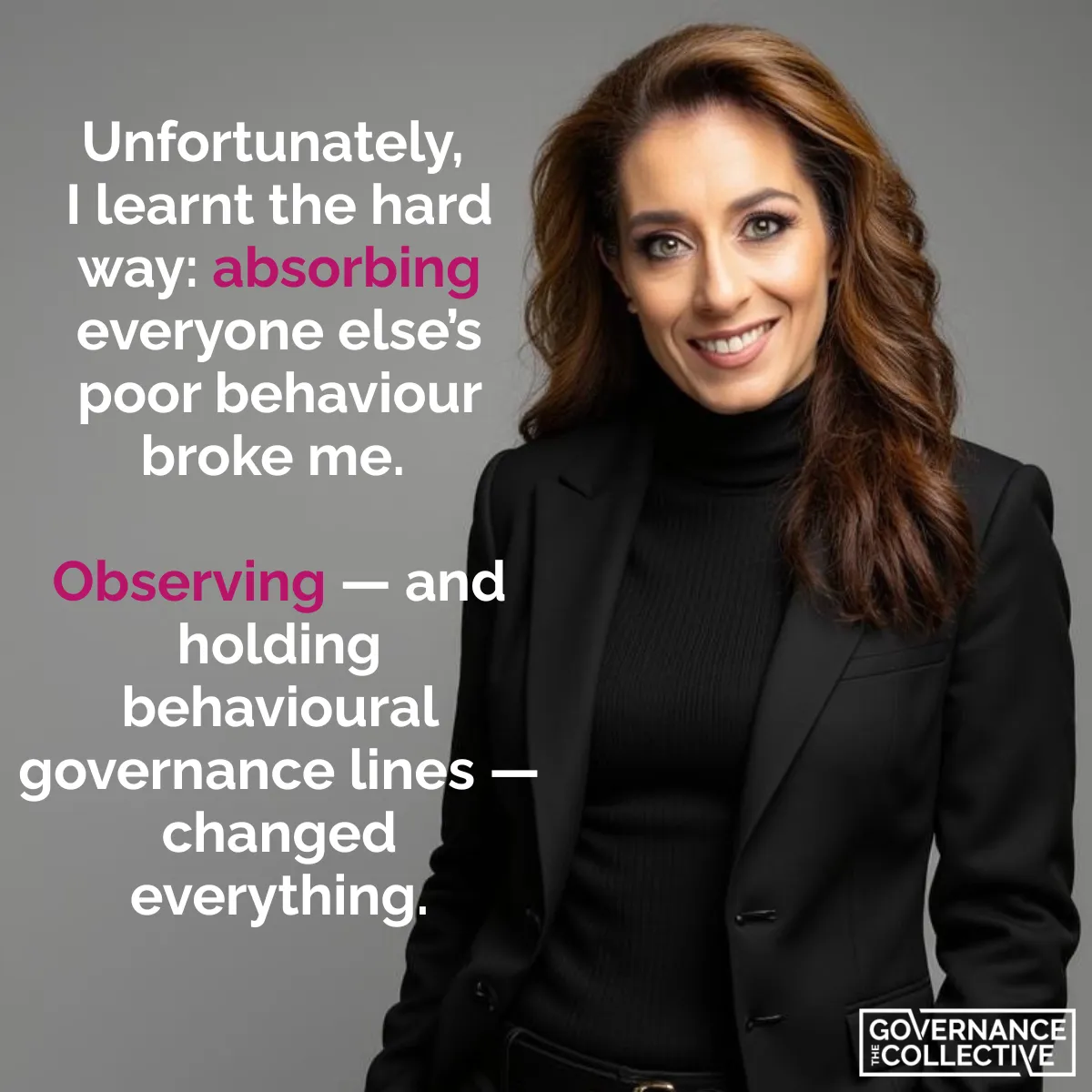
Absorb vs Observe: The Shift That Changed My Work
When I was a baby governance professional, I didn’t just work hard — I wore everyone else’s stuff.
Every anxious email. Every “urgent” scramble for a last-minute Board paper. Every sideways glance in a meeting. I took it all on. I fixed chaos that wasn’t mine, carried work I didn’t own, and smiled while my nervous system did backflips. It served everyone else. Me? Not so much.
I learnt the hard way that absorbing other people’s poor behaviour isn’t service — it’s self-erasure.
It showed up viscerally: a knot before Board packs; 3am “just quickly” emails; clenched jaw on the drive home; Sunday dread because Monday meant mopping up someone else’s mess. I was told to be a duck on water — glide gracefully while my legs thrashed underneath. It looked impressive. It wasn’t governance.
The Change
My turning point was learning to observe, not absorb — and to hold the line.
When I stopped wearing other people’s behaviour and started designing governance around cultural behavioural patterns, expectations became explicit, power and boundaries were held, decisions got cleaner, and the work stopped chewing me up.
Here’s the truth: many frameworks are designed in a vacuum. They look great on paper, but they don’t help people make decisions — and they definitely don’t shape behaviour in the Boardroom. What works is adding the behavioural layer so the framework carries the heat — not you.
Quick ready-reckoner
Absorbing (don’t):
You carry other people’s urgency, blame and inaction.
Your role blurs; you become the safety net and shock absorber.
Decisions are made from adrenaline, not alignment.
Observing (do):
You see patterns over personalities and design for them.
Roles, boundaries and escalation ladders are visible — and lived.
Your nervous system (and the team’s) stays regulated enough to choose wisely.
Try this this week
Anchor accountability. If it isn’t yours, don’t carry it.
Micro-script: “To keep roles clean, this sits with [owner]. I’ll support by [your remit].”
Design the boundary. Put the line in the workflow: decision paths, delegations, sub-delegations, time gates.
Micro-script: “Before this reaches the Board, we need [A/B/C]. Let’s protect the Boardroom for decision, not development.”
Slow your response. Observe first; respond once, on purpose.
Micro-script: “I hear the urgency. Here’s the pathway that respects roles and moves this forward.”
Name the pattern, not the person.
Micro-script: “We’re seeing last-minute papers become the norm. The framework sets [cut-off/quality gate]. Let’s hold the lines we set.
If you’re ready to observe, hold strong lines and proactively manage behaviours, define clearer roles and faster, cleaner decisions, this is your next step:
Come along to my upcoming Workshop:
How to Design Governance Frameworks That Shape Behaviour — Without the BS, the Bottlenecks or the Boardroom Blame Game
If you only have time for one this year, catch this one — it’s free.
In 45 minutes, I’ll show you how to draw clear power and authority lines around behaviour so your framework carries the heat — not you.
Save your seat → https://thegovernancecollective.com/how-to-design/home?utm_source=email&utm_medium=newsletter&utm_campaign=october_2025_workshop
I'd love to see you there!
